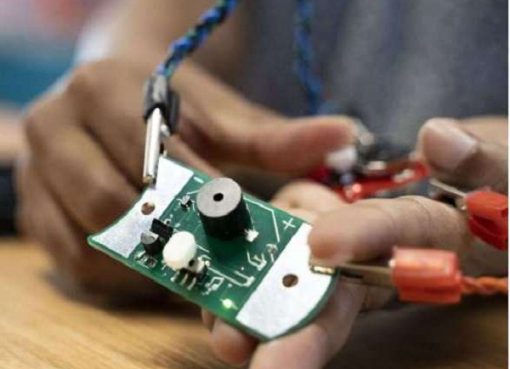Things are starting to look up for global trade in 2021. After supply chain disruptions caused world merchandise trade volumes to fall to 5.3 per cent in 2020, the World Trade Organisation expects volumes to grow by 8.0 per cent in 2021 — a promising sign of rapid recovery in global trade.
In Asia-Pacific, China’s growth has spurred exports from Southeast Asia, with the non-oil domestic exports of Singapore growing 12.1 per cent in March 2021 and total exports of Indonesia growing 30.5 per cent y-o-y in March.
While this recovery means many businesses can look forward to things returning to normal, this perspective begs the question — should “returning to normal” really be desired?
Out with the old habits, in with the new norms
Throughout the COVID-19 pandemic, many have realised that the new norms of work-from-home arrangements, food deliveries, and virtual yoga are more practical ways of living than our old routines.
Similarly, businesses and industries recognise that in a post-COVID-19 world, there are outdated industry practices that need to end—as organisations must reimagine their backend systems and architecture to fit within the new world.
Instead of reverting to old processes, businesses can treat the disruption from COVID-19 as the perfect springboard to acquiring competitive advantage, and create a permanent new normal of how business is done leveraging technology. Nowhere is this opportunity riper than in the trade finance industry.
In trade finance, importers and exporters struggle to navigate the opaque and fragmented nature of an ecosystem heavily dominated by paper processing and slow transactions involving multiple parties. These outdated systems are proving a challenge for all who are involved—banks, importers and exporters, insurers, export credit agencies, and various service providers.
According to the International Finance Corporation (IFC), the trade finance gap has never been bigger and is expected to expand, especially in emerging markets.
As a result, players within the trade finance sector have been scouring for ways to simplify how trade is managed. The answer? Blockchain technology.
Post-COVID-19 recovery: A golden opportunity for blockchain in trade finance
Blockchain technology is fast being adopted across the trade finance ecosystems. For example, Contour, a digital trade network of the world’s leading trade banks, including HSBC, BNP Paribas, ING, Standard Chartered, and Singapore’s DBS Bank, is harnessing Corda Enterprise to bring more efficiency to documentary trade.
The platform unites buyers, suppliers, and banks on a decentralised digital trade finance platform to simplify management of the Letter of Credit (LC) process, drastically cutting the cost and time needed to issue LCs by up to 90 per cent.
A similar instance is in the case of Bangkok Bank in Thailand, which recently announced that it is deepening its integration of blockchain technology into its trade, payments, and supply-chain business.
This comes after it facilitated an LC transaction between a subsidiary of Thailand-based PTT Group and a Vietnam-based trading partner in September 2020, reducing LC issuance time by over 95 per cent.
While these examples demonstrate immense progress of blockchain innovation in the sector, the speed at which these technologies are being adopted in trade finance creates a new problem — interoperability.
Keep calm and stay interoperable
With the introduction of any new technology, organisations face preliminary hurdles when it comes to stacking solutions and enabling integration with existing systems and standards.
However, in the case of trade finance, many players have already started implementing blockchain solutions, each wooed by different networks, consortia, and platforms that offer ways to integrate into their legacy back-office systems.
Each is rightfully chosen for specific strengths and areas of focus, but this inevitably creates multiple blockchain ecosystems which are siloed from each other.
As the technology improves, the challenge for these enterprises becomes finding ways to build bridges between different blockchain systems to ensure data can be shared between one ledger and another. This is especially critical as the pandemic has made it clear that supply chain infrastructures need to communicate with each other, or risk running into the same inefficiencies that traditional processes already present.
For example, a surgical mask manufacturer whose bank runs on Hyperledger Fabric must be able to provide a letter of credit to a fabric supplier’s bank operating on Corda implementation. There needs to be an interoperable way to facilitate such transactions, information sharing, and execution of smart contracts across different supply chain networks for blockchain to bring real value.
An example of this is the collaboration between MineHub, a mining and metals trading platform on Hyperledger Fabric, and Contour which runs on Corda – allowing mining corporates to have access to financing via this interoperability.
A critical way to build interoperability is by creating shared industry standards that cut across trade tools and allow fragmented supply chain management platforms to link up and operate together. This is a challenge that the Bankers Association for Finance and Trade (BAFT), a leading international transaction banking association, solved as members came together to develop a framework for a digital ledger payment commitment (DLPC).
The BAFT DLPC standardises the payment commitment—an instrument that functions as a legally enforceable obligation to pay a sum of money, and the most critical aspect of a trade finance transaction. The BAFT DLPC gave birth to DLPC CorDapp, a Skuchain application that enables interoperability in permissioned blockchain networks, so for instance, transactions between enterprises on Hyperledger Fabric and their bank partners on the Corda Network can take place without any party having to onboard onto another platform.
In the new world order, the hallmark of successful business will be efficiency, expediency, and flexibility. In this world, the implementation of blockchain will no longer be an option for the trade industry.
With more frameworks and technological collaboration in the trade finance sector, players in the ecosystem have an enormous opportunity to define the new normal for the industry with blockchain, and ensure economic recovery stays within reach.
Source: e27










